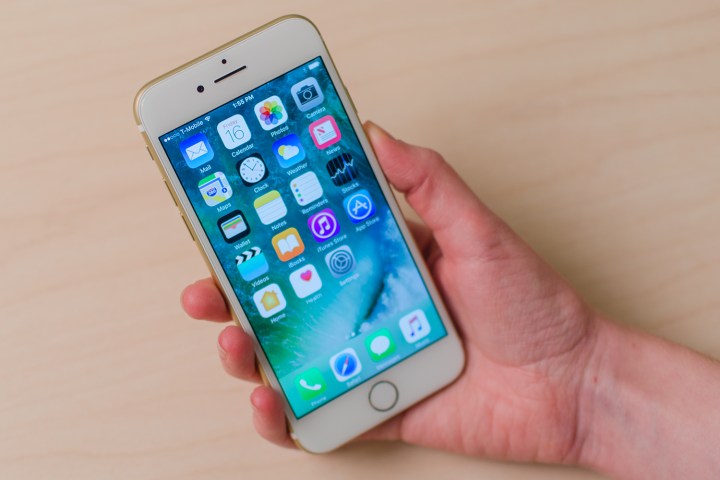
In extensive, separate reviews by both Unbox Therapy’s Lew Hilsenteger and GSM Arena, the iPhone 32GB performed significantly worse than the 128GB and 256GB models. An investigation by New York-based Cellular Insights, meanwhile, found that some models of iPhone exhibited noticeably worse download and upload speeds than others.
Hilsenteger’s testing methodology principally involved using a free benchmarking suite for iOS devices to compare the read speeds, or the rate at which the handset parses data from the storage, and the write speeds, or the rate at which the handset records data to storage, between models of iPhone 7.
He found the read speeds of the 32GB iPhone 7’s storage comparable to those of the 128GB model, but the write speeds were a different story. In one test, Hilsenteger recorded a write rate of 42MB per second on the iPhone 7 and 341MB per second — eight times faster — on the iPhone 128GB.
GSM Arena corroborated those findings in tests of its own. In the results of benchmarks conducted with Basemark OS II, iPhone 7 models with larger amounts of storage performed much better than their low-capacity counterparts. The iPhone 7 32GB regularly failed to exceed the benchmarking suite’s 800-point threshold, in contrast to the 1,300-1,700 range that the 128GB iPhone 7 achieved.
And the synthetic results were reflected in real-world testing. Hilsteneger connected 32GB, 128GB, and 256GB models of iPhone 7 to a MacBook via USB cable and transferred the entirety of Star Wars — Episode IV: A New Hope between the two, comparing the amount of time it took to complete each transfer. In one particularly discouraging instance, the 32GB iPhone finished transmitting the 4.2GB file in three minutes and 40 seconds, while the 256GB iPhone took two minutes and 34 seconds — nearly a whole minute less.
The reason may be less conspiratorial than it appears. Modern smartphones, the iPhone 7 included, handle storage using solid-state technology — basically, electronic modules with non-moving parts. Unlike hard drives, which rely on mechanical arms to juggle data across a platter of spinning magnetic disks, SSDs use an embedded processor known as a controller to retrieve and store data from individual banks of memory known as NAND-based flash. That’s where size makes a difference: the comparatively generous real estate afforded by, say, a 128GB module allows manufacturers to arrange NAND in parallel, allowing the controller to access data much more efficiently than in the cramped configurations of smaller SSDs.
Write speeds don’t represent the only discrepancy between iPhone 7 models. Cellular Insights reported that certain variants of iPhone 7, specifically with the model numbers A1778 and A1784, performed “noticeably poorer” on 4G networks than those with model numbers A1660 and A1661. The former use Intel chips to manage wireless connectivity, while the latter rely on a competing solution from Qualcomm.
In the course of its testing, Cellular Insights found that the Intel iPhone 7 Plus models performed 30 percent worse, and sometimes as much as 75 percent worse, than the iPhone 7 Plus models with the Qualcomm chip in terms of download speeds, uploads speeds, and reception. “In all tests, the iPhone 7 Plus with the Qualcomm modem had a significant performance edge over the iPhone 7 Plus with the Intel modem,” Milan Milanović said. “We are not sure what was the main reason behind Apple’s decision to source two different modem suppliers for the newest iPhone.”
The implications are wide-reaching. The 32GB iPhone 7 costs $650, and larger configurations significantly more: the 128GB version and 256GB version retails for $750 and $850, respectively. And beyond storage capacity, there’s no obvious difference between them: the screen, components, and aesthetics are the same, and Apple doesn’t denote network or write speed differences between them in marketing materials.
The storage issue is easy enough to avoid by simply buying an iPhone 7 with less than 128GB in capacity, but the networking hardware’s another story: the Intel iPhone 7 Plus is primarily sold in the U.K. and Europe, while the Qualcomm models dominate the U.S. We’ve reached out to Apple for comment.


